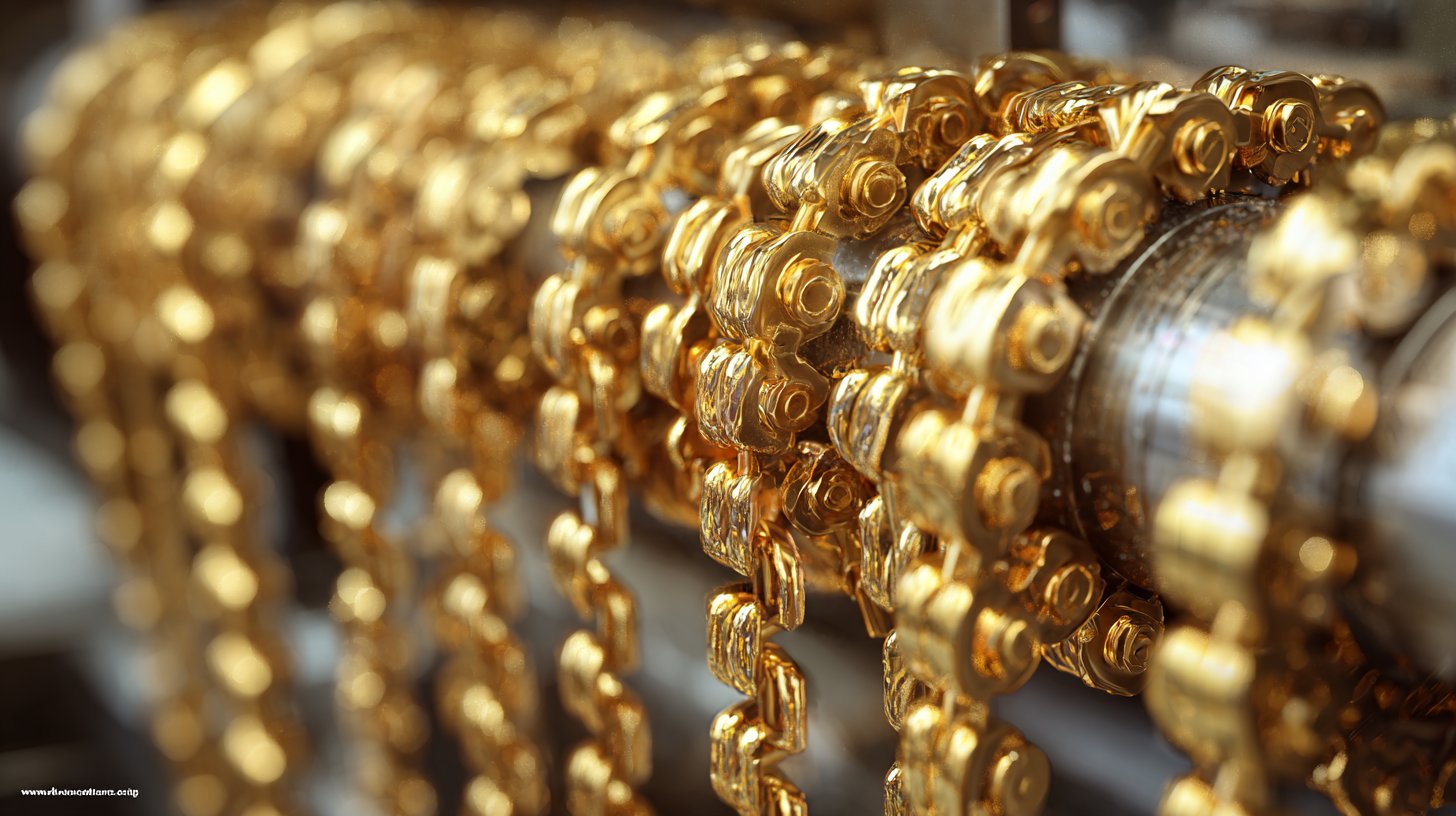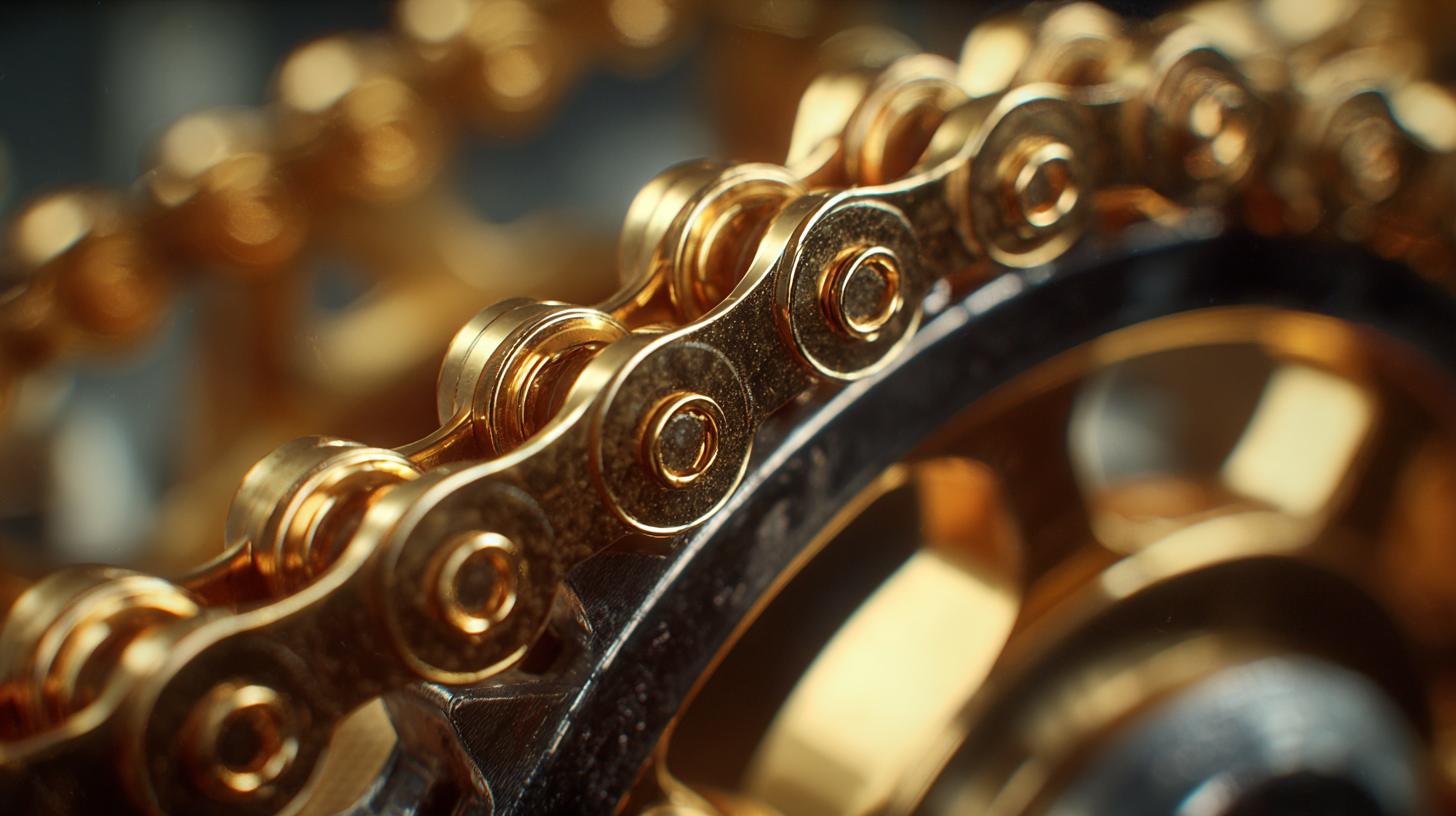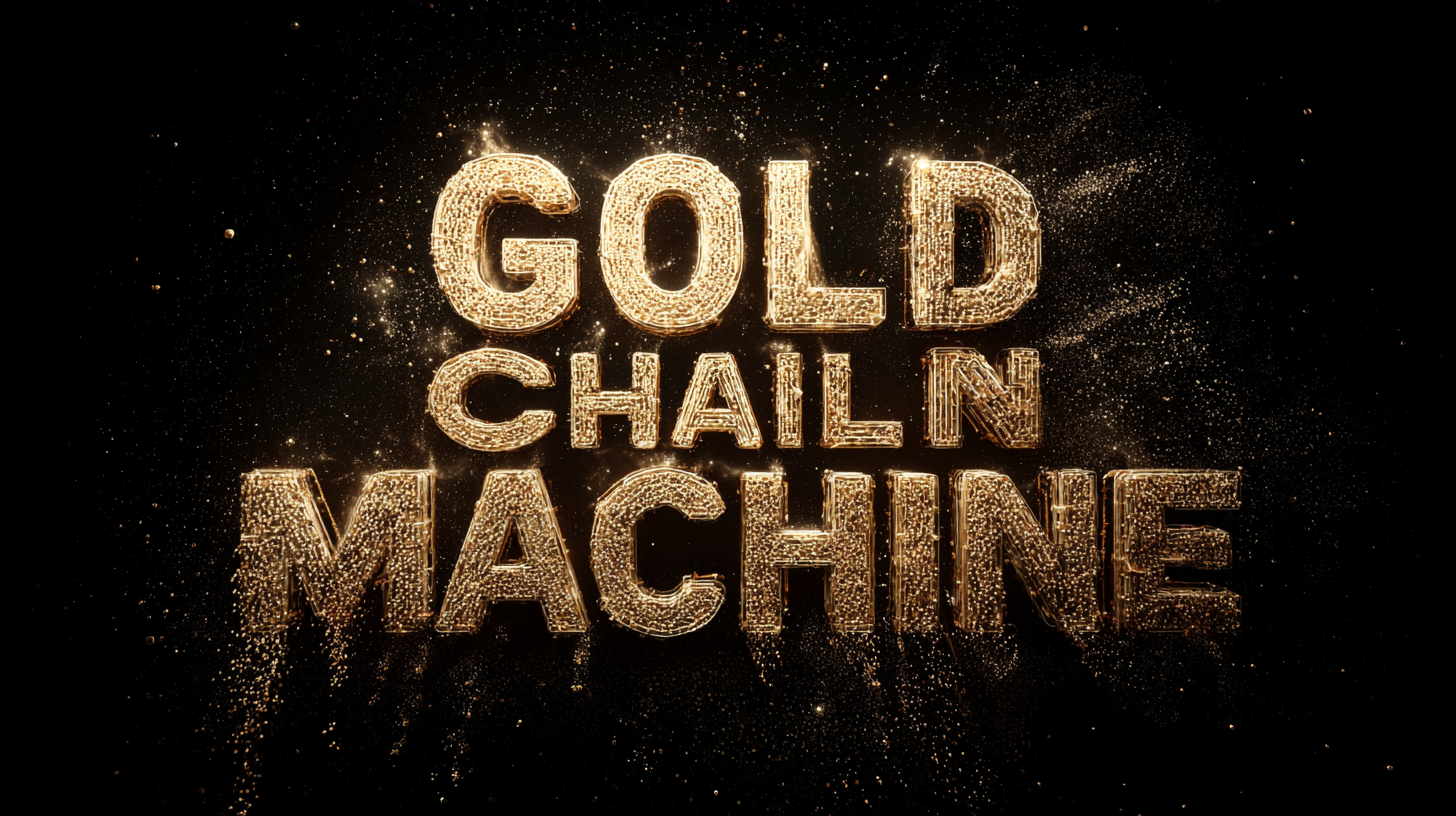In the ever-evolving landscape of the jewelry manufacturing sector, choosing the right equipment is crucial for optimizing production efficiency. As the market for gold jewelry is projected to reach a staggering $250 billion by 2025, manufacturers are increasingly turning to advanced technologies to meet growing consumer demands.

Among these technologies, the Gold Chain Machine stands out as a vital asset for enhancing production capabilities. Recent studies indicate that the implementation of state-of-the-art Gold Chain Machines can boost production efficiency by over 30%, allowing manufacturers to remain competitive in a rapidly changing marketplace. By understanding the key features and benefits of these machines, businesses can strategically position themselves to capitalize on the impending growth of the gold jewelry market, ensuring a lucrative return on investment and sustainable success.
In the context of gold chain production, understanding the importance of industry import and export certifications is crucial for enhancing efficiency and ensuring a stable supply chain. As demand for gold in India continues to rise, largely fulfilled through imports and local recycling, the certification of materials becomes vital. It ensures that the gold entering the market meets both quality standards and regulatory requirements, which is essential for maintaining consumer trust and enhancing production processes.

The current landscape, characterized by tightening export controls from China on critical rare earth materials, highlights the need for a robust certification framework. This scenario emphasizes the importance of securing reliable sources and certifications for gold and its components. By investing in certified machines and materials, gold chain manufacturers can boost their production efficiency significantly. This proactive approach not only mitigates risks associated with supply chain disruptions but also positions businesses to thrive in an increasingly complex global market. As the industry adapts to these challenges, the role of import and export certifications will be pivotal in ensuring sustainable growth and operational excellence.
When selecting a gold chain machine, adherence to key standards and regulations is paramount for ensuring compliance and operational efficiency. According to the International Organization for Standardization (ISO), machinery must meet specific safety and performance standards to minimize risks related to production. The ISO 9001 standard, applicable to quality management systems, emphasizes the importance of documentation and continual improvement in manufacturing processes, which can translate into increased efficiency and lower operating costs.
Tip 1: Before purchasing, ensure that the machine complies with applicable ISO standards related to manufacturing and product safety. This can help avoid costly penalties and downtime, giving your production process a considerable boost.
Furthermore, compliance with Machinery Directive (2006/42/EC) in Europe can offer insights into the design and operational safety of machinery. Non-compliance can lead to product recalls or legal repercussions. By investing in machines that are already certified to meet these regulations, businesses can ensure smoother operations and greater customer trust.
Tip 2: Regularly review and update your processes according to changes in regulations to maintain compliance and enhance productivity. Keeping abreast with standards allows manufacturers to stay competitive and reduce risks associated with non-compliance.
When it comes to enhancing production efficiency in gold chain manufacturing, understanding the impact of certifications cannot be understated. Certifications such as ISO, CE, and industry-specific standards not only ensure compliance with quality manufacturing processes but also signal to potential clients that your products meet established benchmarks. This credibility can lead to increased customer trust and potentially higher sales. It's essential to analyze these production efficiency metrics regularly to pinpoint areas where improvements can be made.
Additionally, choosing the right gold chain machine plays a crucial role in your overall productivity. For instance, seek machines that are known for their precision and automation capabilities. Investing in technology that allows for automated production processes can significantly reduce operational times and waste, ultimately enhancing efficiency by as much as 30%. Regular maintenance and upgrades of your equipment are also vital—keeping your machines running smoothly can significantly affect your output quality.
Another key tip is to engage with machine manufacturers who offer comprehensive training and support. This ensures that your team is not only familiar with the equipment but can also troubleshoot any issues that might arise during production. By integrating these practices, you can leverage certifications while simultaneously optimizing your production processes for better performance.
 Quality assurance plays a pivotal role in enhancing the manufacturing process for gold chains, significantly impacting production efficiency and sustainability. As we witness increasing consumption rates, the gold chain industry must adapt to eco-friendly practices. By integrating robust quality assurance systems, manufacturers can reduce waste, optimize material usage, and ultimately lower production costs. Studies show that quality control can improve product consistency, leading to a 20% decrease in defective outputs, which directly correlates to improved productivity.
Quality assurance plays a pivotal role in enhancing the manufacturing process for gold chains, significantly impacting production efficiency and sustainability. As we witness increasing consumption rates, the gold chain industry must adapt to eco-friendly practices. By integrating robust quality assurance systems, manufacturers can reduce waste, optimize material usage, and ultimately lower production costs. Studies show that quality control can improve product consistency, leading to a 20% decrease in defective outputs, which directly correlates to improved productivity.
In choosing the best gold chain machine, consider the following essential tips. First, look for machines equipped with advanced quality monitoring technology that allows for real-time assessments throughout the production process. This capability can enhance overall product quality and reduce rework stages. Second, prioritize machines that align with sustainable manufacturing practices. The latest technological advancements in manufacturing not only boost efficiency but also minimize environmental impact, aligning with the industry's shift towards sustainability. Implementing these considerations can significantly elevate production capacity and quality, reinforcing the brand’s position in a competitive market.
The global gold chain trade is witnessing significant shifts, largely driven by certification standards that influence market dynamics. In recent years, consumers have become increasingly conscious of the ethical and quality standards of jewelry they purchase. As a result, certifications from recognized authorities play a crucial role in ensuring that gold chains meet both ethical sourcing and quality benchmarks. This certification not only enhances consumer trust but also drives prices, as products with certified quality are often favored in competitive markets.
Moreover, businesses are recognizing the importance of aligning their production processes with certification requirements to maintain relevance. Companies that invest in gold chain machines capable of producing certified products can tap into a growing segment of ethically-minded consumers and retailers. By leveraging these machines to streamline production while adhering to certification guidelines, manufacturers can not only boost their efficiency but also enhance their market positioning. Ultimately, understanding the influence of certification on the gold chain market is essential for any business aiming to thrive in today's competitive landscape.
